Introduction
Search engine optimization (SEO) is a process of improving the content, functionality and usability of the site in order to gain higher rankings on search engines such as Google, Bing or Yahoo. Search engines are constantly changing, adapting and updating the way they determine what sites should rank higher than others. There is no one right way to do SEO, but there are definitely some strategies that will make a bigger impact on your rankings than others. Below are some strategies we recommend for improving your performance in search engine rankings.
Determine who your target audience is.

In order to create a successful SEO strategy, you need to know who your target audience is. If you don’t have a clear idea of who your target audience is, then it’s going to be hard for you to create content that will appeal specifically to them.
Here are some questions you should ask yourself in order to determine who your target audience is:
- Who am I trying to reach?
- What are their demographics?
- Where do they live and work?
- What is their educational level?
- How much money do they make per year or month?
- What kinds of hobbies do they enjoy (or not enjoy)?
The more specific the answers are, the better off you’ll be!
Create quality content.
The best way to achieve good SEO is by creating quality content. You’ll want to use the keywords you’ve selected in your title and meta description, but also make sure that each page has unique content that helps readers solve a problem or answer questions.
Your focus should be on providing your readers with content that they will want to read, not just trying to load up your text with keywords. Search engines can often detect if you are just trying to game the system by filling your site with extraneous keywords. You should instead focus on making quality informative content and focus your keywords where they have the most impact.

Use keywords in titles and descriptions.

A title is the first thing people see when your page comes up in search results. It’s important to use keywords in this field. Make sure that the title has some meaning for users and is indicative of the content provided on the page. A description should be added as a meta tag on every page, and is an additional opportunity to include some keywords, as well as a summary of the content of that page.
The URL for your page is also a factor. It is often a good practice to have your URL reflect the title of the page in some way, so that it contains a keyword and indicates the page content. We can look at the URL of this post as an example: https://bloomcreativestudios.com/strategies-for-improving-seo. The URL provides a keyword (SEO) and echoes the title of the blog post.
Utilize the alt tag.
The alt tag is an alternative to the image, and it’s what search engines use when they can’t display the image due to a lack of bandwidth or because the page is being served up as text only. The alt tag also helps with accessibility for people who are visually impaired, since screen readers read out the contents of this tag as well.

Browsers and screen readers also utilize this information as a way to know that there’s an image on your page and where it is located within your document. It’s good practice to include alt tags in every instance where you have an image on your site, whether or not that particular image is displayed multiple times or if it even displays at all.
Encourage sharing your page with an engaging headline.

It’s extremely important to have a compelling headline. Your headlines are probably the first thing your readers will read. They need to be interesting and catchy enough so that people want to keep reading and hopefully share with others. When people share your posts, it tells search engines that your content is something that people are interested in, so they are more likely to promote your content in their search results.
When creating headlines for social media posts, remember that each platform has its own character limit (for example: Twitter is 140 characters). While this may seem arbitrary at first glance, it forces people who write for their audience on those platforms into writing more succinctly which means less fluff and filler and thus providing shorter headlines that are direct and to the point are often more impactful. Also, remember that headlines serve as a preview of what’s inside your page. If they’re not relevant, they might turn away potential readers and will likely prevent users from sharing your content.
Site speed is important.
A slow site can be frustrating for users, causing them to abandon the site and a website that’s slow won’t rank highly in search results. It also might not load on mobile devices which may limit your website’s audience. That’s why you need every best practice at your disposal when fighting back against a slow site.

The first step is to check how fast your website loads by using tools like Pingdom or Google PageSpeed Insights (GPSI)/Lighthouse. These diagnostic tools will tell you what improvements are needed so that visitors don’t have to wait too long for pages to load. Once you know which areas need improvement, there are many ways to increase page speed:
- Optimize Your Images. Images are usually one of the biggest contributors to slower page loads because they take up so much space on a web page; if they’re not compressed properly then this can add seconds onto each page view. There are quite a few ways to optimize images for faster loading times: If possible, use vector graphics (like SVG) instead of rasterized ones (like JPEG or PNG) or use web optimized image formats like WEBP. Lazyloading is a way of delaying the loading of images and content until after other content has loaded and the lazyloaded content would be displayed onscreen. This can also improve the apparent speed of the site, but it should be used in conjunction with other image optimization methods.
- Delay Javascript. A major part of your page’s speed is how long it takes to become interactive. Large scripts can block the loading of images and interactable elements of the site until they are done loading. Often, Javascript can be loaded in the background after the page is visible and interactive for your users, so it is a good idea to delay these scripts when possible.
- Use a cache. A cache creates temporary storage of some of your site’s files more locally for your users. This greatly increases the speed of your site by reducing the number of files that must be downloaded from your website’s hosting server.
There are many other things that can be done to improve the performance of a site. Once you have done some of the basics, it is always good to recheck the site with the above mentioned tools (Pingdom and PageSpeed/Lighthouse) to see where improvements can still be made.
Consider your design and layout.

Good design and layout are important for any website, but they’re especially important in the context of SEO. A poorly organized website can make it difficult for visitors to find what they’re looking for and cause them to abandon their search before they’ve found what they need. When your site has readers abandoning your content quickly, it communicates to the search engine that your site does not have quality content, so they are less likely to show your site in future search results.
It is also beneficial to use a responsive design. Responsive web design (RWD) is an approach that allows websites to adapt their presentation based on the device reading it (such as a desktop computer or smartphone). RWD makes it easier for search engines to crawl sites that use this technology, since crawlers don’t have to access multiple versions of the same page depending on whether or not it’s being viewed from a phone or tablet versus a desktop computer; instead, all versions of each page are rendered automatically. For instance, if you have an image gallery at the bottom of your site when viewed on a desktop but would prefer if it appeared at top instead when viewing with smaller screens such as smartphones or tablets, a responsive design would allow the site to detect the screen size and move the content where you want it to be without the need for recreating the entire page.
High-quality links matter.
Link building is an important part of SEO. In fact, it’s more important than ever before because Google has gotten much better at detecting fake links and penalizing sites that try to game their systems.
If you want your website to rank highly in search results, you need:

- A site with high-quality content that people want to share
- Links from other websites that also have high-quality content (and aren’t spammy)
A good way to improve link building is to begin linking to reputable sites that you have used as sources. After building content and a reputation for linking to reputable sites, try reaching out to relevant site owners and asking if they are interested in linking to content on your site. Local resources, such as your local Chamber of Commerce, magazines, and news sources are likely willing to link to your site and help you build your website’s reputation.
Write better content by studying the competition.

Understanding your competitors’ content is key to writing better SEO copy that not only acts as a great landing page for users but also drives conversions. You can find out what works by studying:
- The structure of their content (for example, are they using headings to break up paragraphs?)
- The keywords they use (are they targeting broad or long-tail keywords?)
- Understand the competition’s links.
Links from other websites can have a huge impact on how well your site ranks in search engines, so it’s important to understand which sites are linking to yours, as well as which sites are linking back to your competitors’. Tools like Majestic can show you which websites link back to each domain; see what types of sites link to both you and your competitors. You may be able find low-hanging fruit here—sites that would probably be eager to return traffic by linking back if approached with a relevant piece of content!
Conclusion
Great SEO is a must for any business that wants to succeed online. If you can invest the time and resources into it, you’ll reap the rewards of higher search engine rankings, more traffic and more customers. For more information on improving SEO for your website, Yoast can be a great resource.
However, if you are looking for someone to manage and improve your SEO for you, reach out to us for a free consultation and quote today!
